We have much more to do and your continued support is needed now more than ever.
Top 10 Grassland Species Across the Globe
Grasslands Wildlife Need Our Help at Home and Abroad
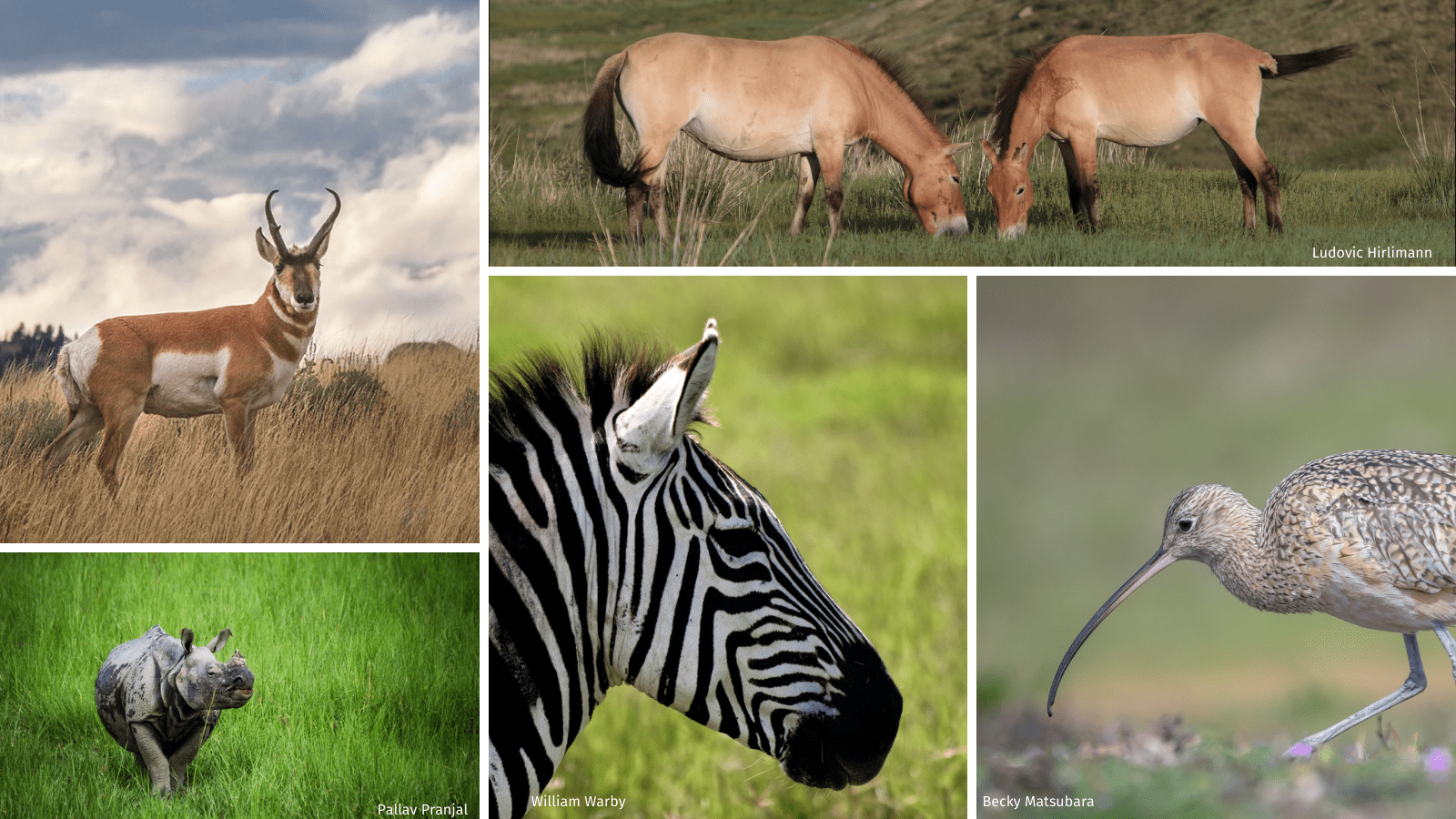
Vast and breathtaking grasslands make up an estimated 25% of the Earth’s land surface. Whether you call them prairies, steppes, savannas, or pampas, grasslands are home to a diverse array of wildlife species and plants.
Here are our top 10 wildlife species that rely on grasslands:
1. Long-billed Curlew (Numenius americanus)
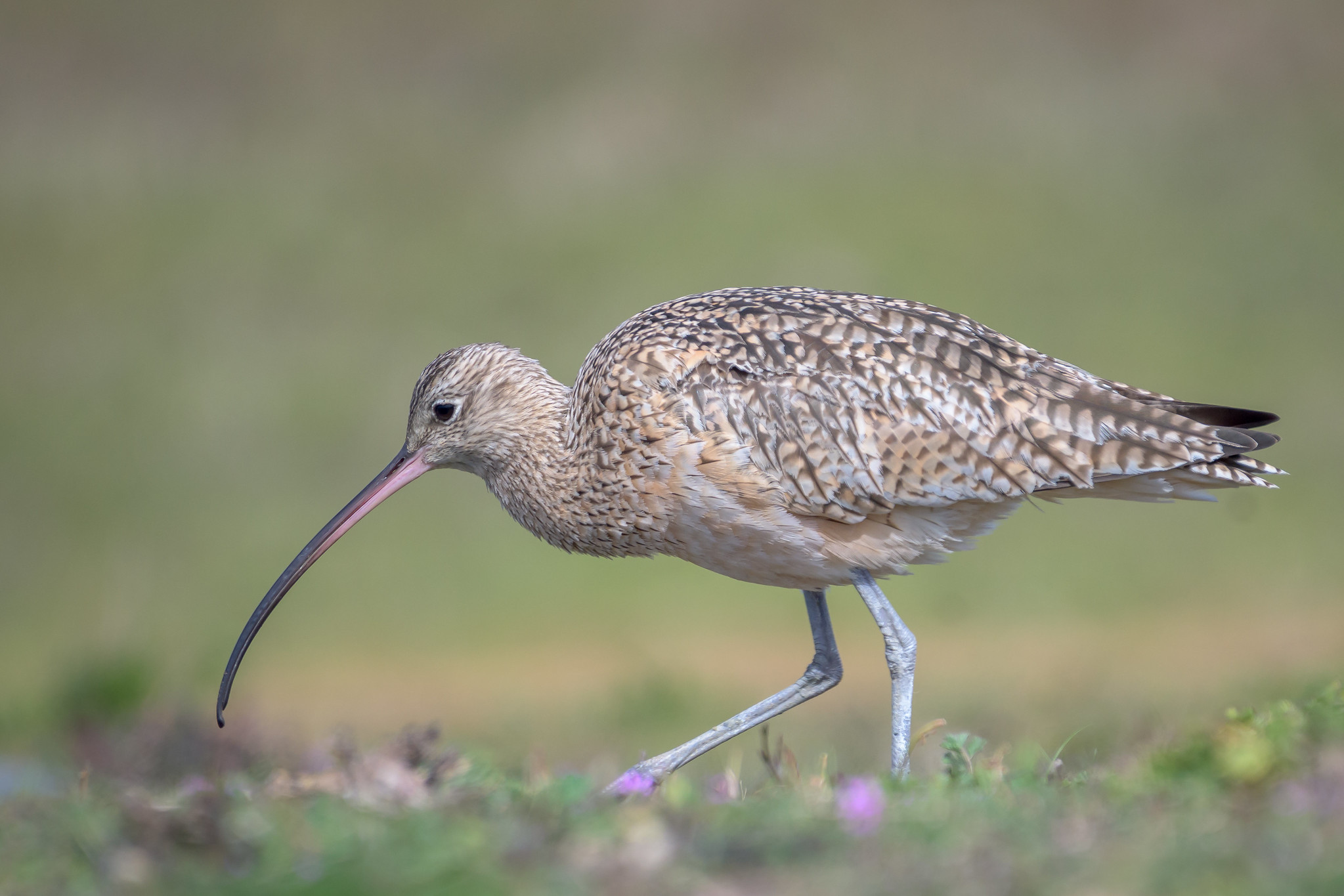
The Long-billed Curlew has a big mouth! Dressed in a pale cinnamon wash, this plump North American bird is known for its football-shaped body, and a long, thin curved bill. Long-billed Curlews use these bills to peck at insects on drier grassland habitats. They can also forage for worms and shrimp in wetlands or mudflats outside of their breeding season.
Though they are known as shorebirds, they must breed in areas with sparse, short grasses and mixed-grass prairies. Original and proud in every way, they strut around their open terrain, bobbing their head with bouncy steps.
2. African Elephant (Loxodonta africana)
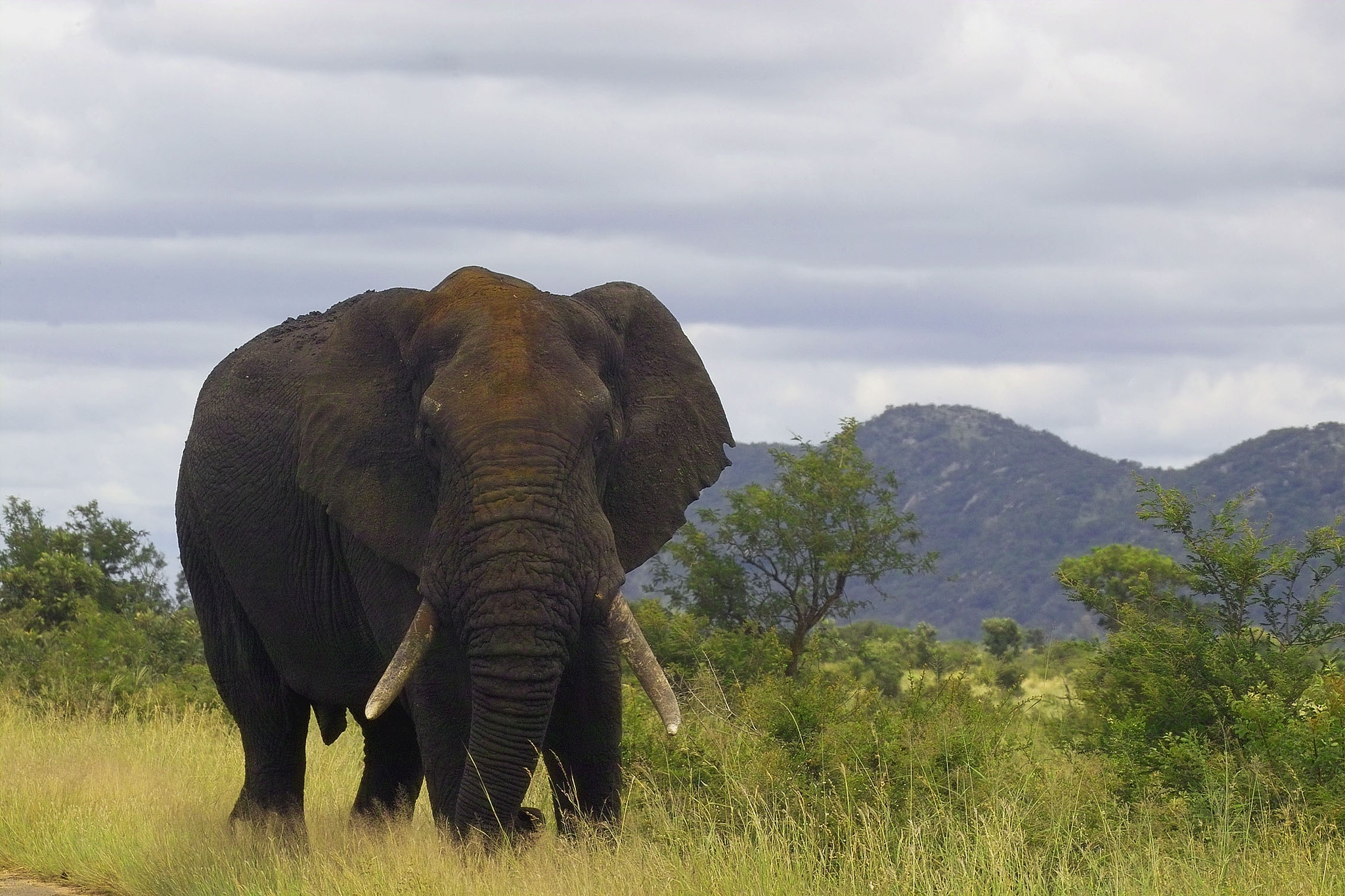
African elephants know how to stand out. They are the largest land mammals on the face of the Earth. Though the males can weigh up to 6 tonnes, elephant families have a matriarchal head. Additionally, African elephants can be incredibly sociable and helpful giants. In fact, they are known as a keystone species, specifically, ecosystem engineers.
The elephants use their tusks to dig up dry riverbeds and create waterholes, break small trees and bushes to maintain grasslands, and spread plant seeds while keeping the soil healthy. They can be found roaming the savannas of sub-Saharan Africa for roots, grasses, fruit, and bark to feed on.
3. Black-Footed Ferret (Mustela nigripes)
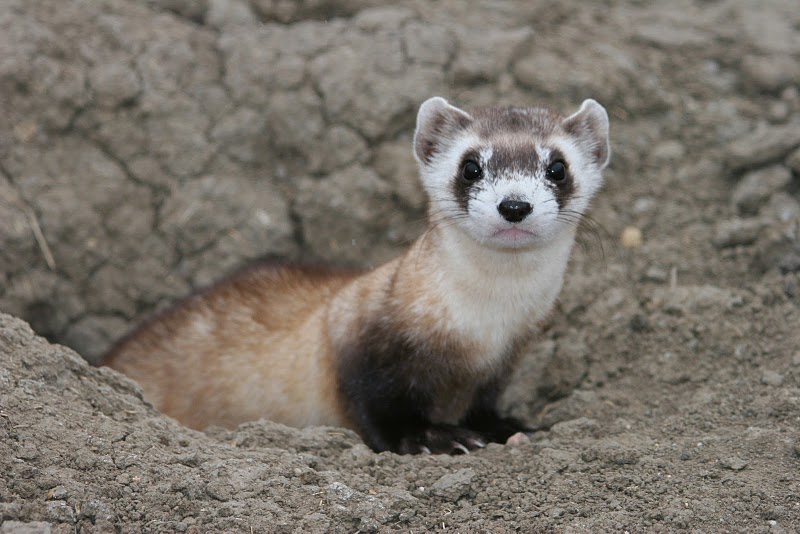
Ferrets are cute, but they mean business. Seriously, a group of ferrets is known as a “business.” They are an alert and agile, medium-sized member of the weasel family, also known for their eponymous black feet. They inhabit temperate grasslands in North America where they can hunt their major food source: prairie dogs. Sure enough, they blend in well with grassland soils and plants.
More active at dawn and at dusk, they can sleep up to 21 hours per day. They wake up at night to hunt, eat, and tend to their offspring, which are called kits. These black-footed ferrets usually produce furry kits in litters of 3-5. Though kits are born blind and dependent on the protection of their underground homes, at about 90 days of age, kits are trained to go on hunting ventures.
4. Plains Zebra (Equus quagga)
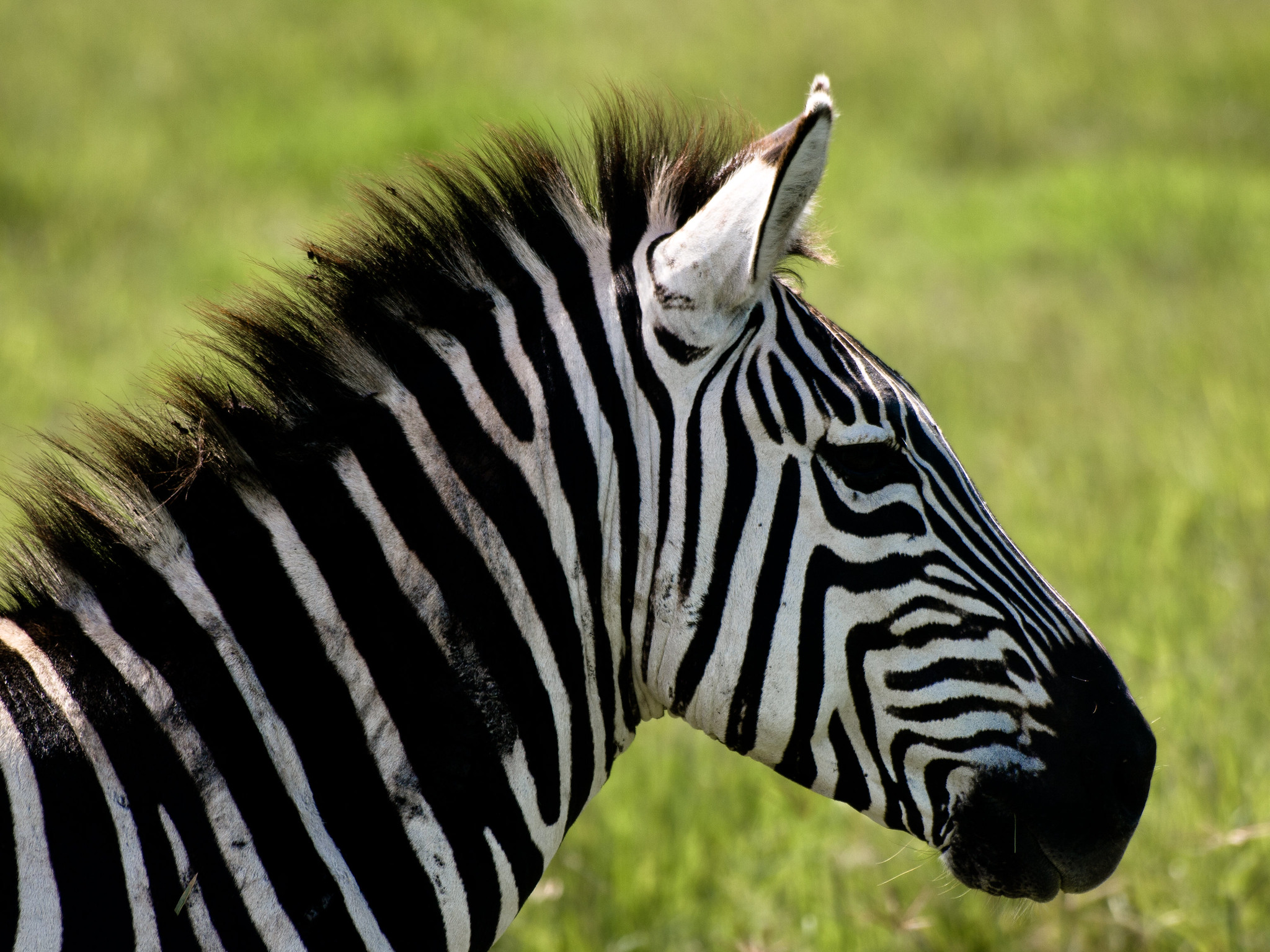
If you’re a foodie who loves to travel, then you have much in common with plains zebras! They are hungry herbivores who travel regularly! In fact, they will migrate up to 2,900 kilometers for food, mostly red oat grass. Plains zebras graze two-thirds of the day on a variety of grasses. Native to over 15 African countries, they can be found traversing savannas in small families known as harems. These are usually made up of a male or stallion, several females, and their offspring.
There is also no question that they are sociable and protective of another. Though plains zebras may travel in large herds, they are known to keep close with their biological family members. As the foal and female zebras run, the males follow behind them, ready to defend their family from any predators.
5. Pronghorn (Antilocapra americana)
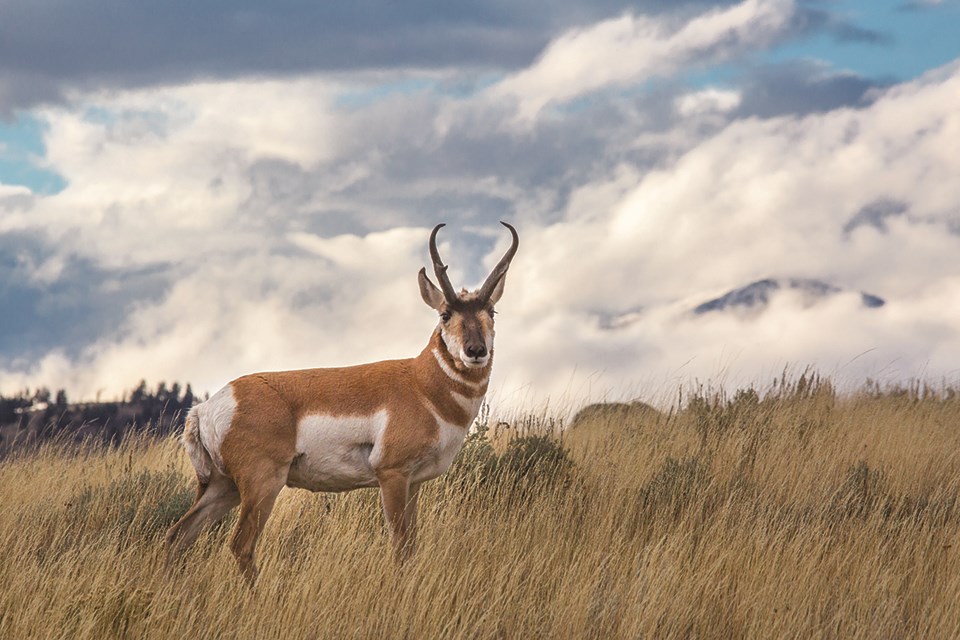
The graceful and observant pronghorn antelope is the fastest hoofed animal in North America, capable of reaching speeds up to 60 miles an hour. Not only do grasslands provide them with free, open land for running, but they offer these herbivores key ingredients for their diet: sage, forbs, and other prairie plants. Female pronghorns also rely on the vegetation of grasslands to hide their offspring so that they can forage while their young are safe.
Often, pronghorn mothers keep within 2 miles of them. However, do not underestimate these youthful pronghorns. In a matter of days after their birth, the small pronghorns can travel, forage, and outrun a human being. Thankfully, grasslands provide a sweet space for the fawns to play!
6. Przewalski’s horse (Equus ferus przewalskii)
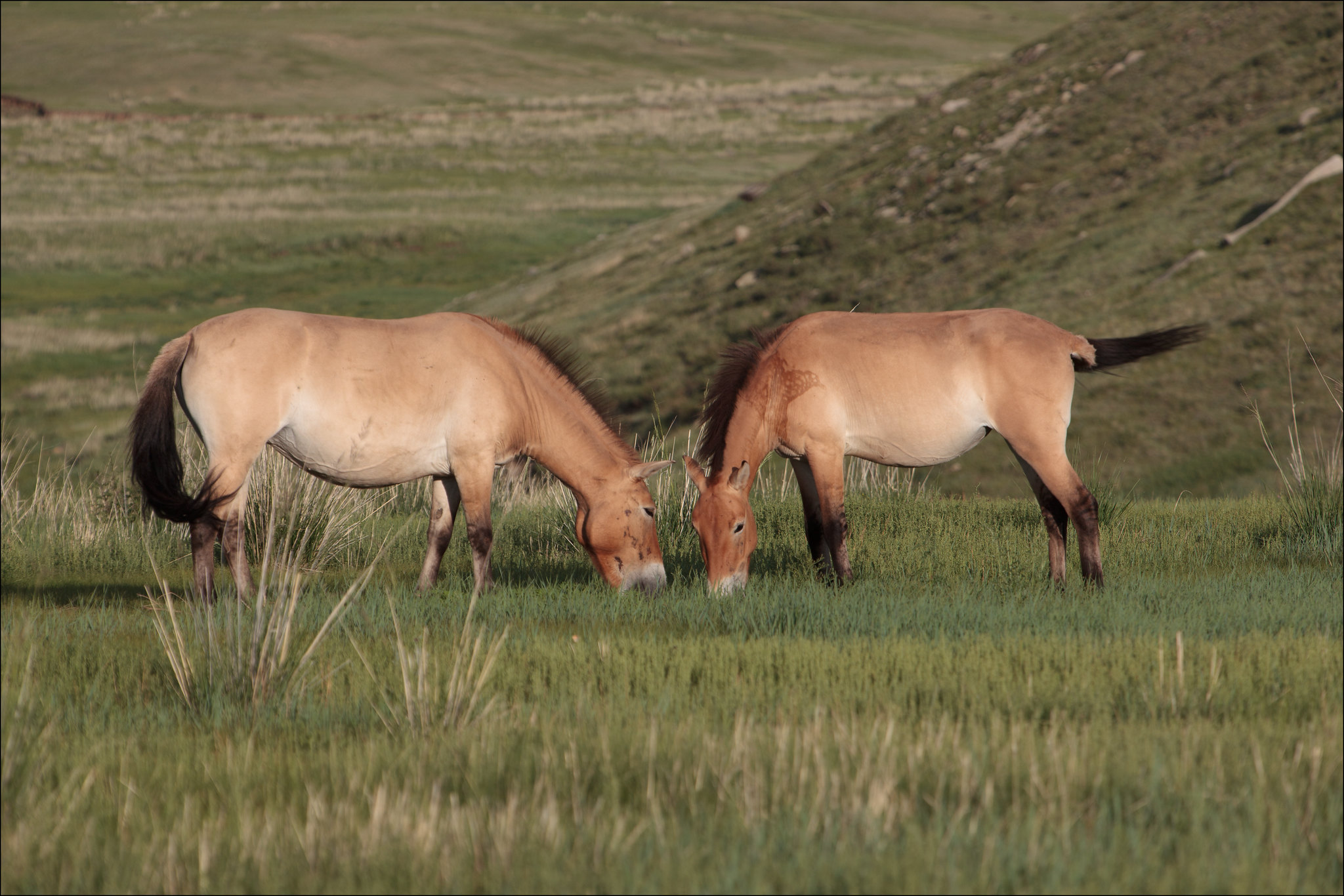
Przewalski’s horses are the last surviving wild horse species left in the world. They can be found in the steppes of Mongolia, China, and Kazakhstan. The steppes of Mongolia are a great site for their diet which largely relies on grass and other shrubby vegetation. In fact, these steppes may be the largest area of unaltered grasslands in the world.
They are a safe haven for these small and stocky horses. Muscular and pony-like, Przewalski’s horses also bear a zebra-like mane and swish a dark plumed tail. These rare dune-colored horses are also called “takhi” which translates to “spirit” in Mongolia.
7. Swift Fox (Vulpes velox)
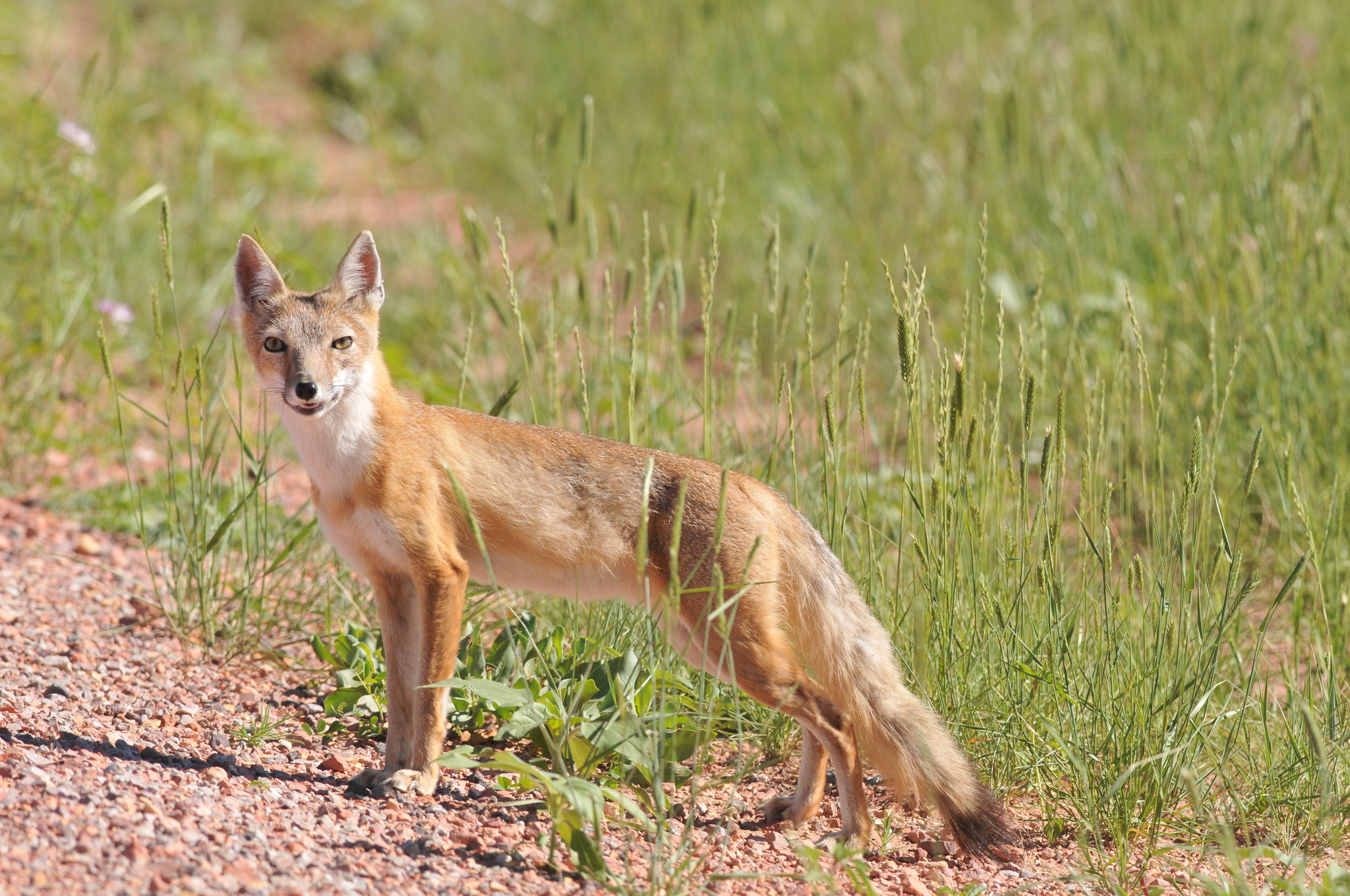
Swift foxes thrive in the short and mixed-grass prairies of the Great Plains. Though most are small creatures and weigh only 4 to 6 pounds, they are speedy and agile. Sure enough, they can reach speeds of 25 miles an hour. They rely heavily on the open prairies and the shorter grasses to scan for predators and hunt.
Swift foxes create their own dens near short and mid-grass prairies and make use of them year-long, straying from the tendencies of coyotes and other foxes. Though sometimes these animals might take over other spaces such as dens that have been abandoned by badgers or burrows that have been abandoned by prairie dogs.
8. Greater one-horned rhino or “Indian Rhino” (Rhinoceros unicornis)
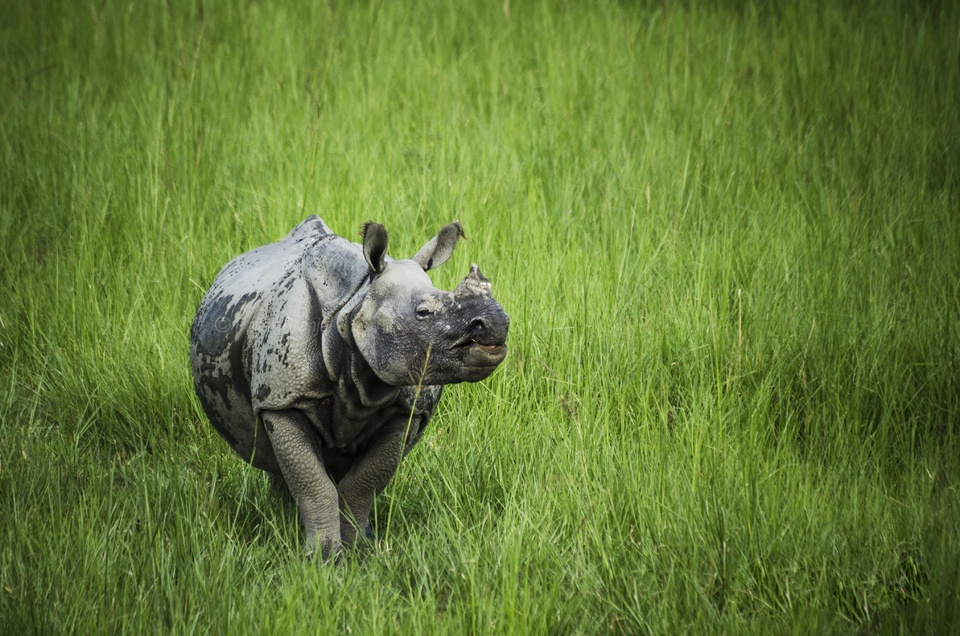
Equipped with a single black horn and a leathery hide, the greater one-horn rhino is the largest of three Asian rhinos. Dawning a body-armor-like appearance and weighing up to 6,600 pounds, these rhinos are literally built for the wild. These grazers inhabit the tall grasslands of Northern India and Nepal.
Its horn comes in handy not only for self-defense, but for plowing fertile plains for leaves, fruits, and grasses. Still, even these large animals get tired. After foraging during the cool mornings, they seek water to submerge themselves in the heat of the afternoon.
9. American Bison (Bison bison)
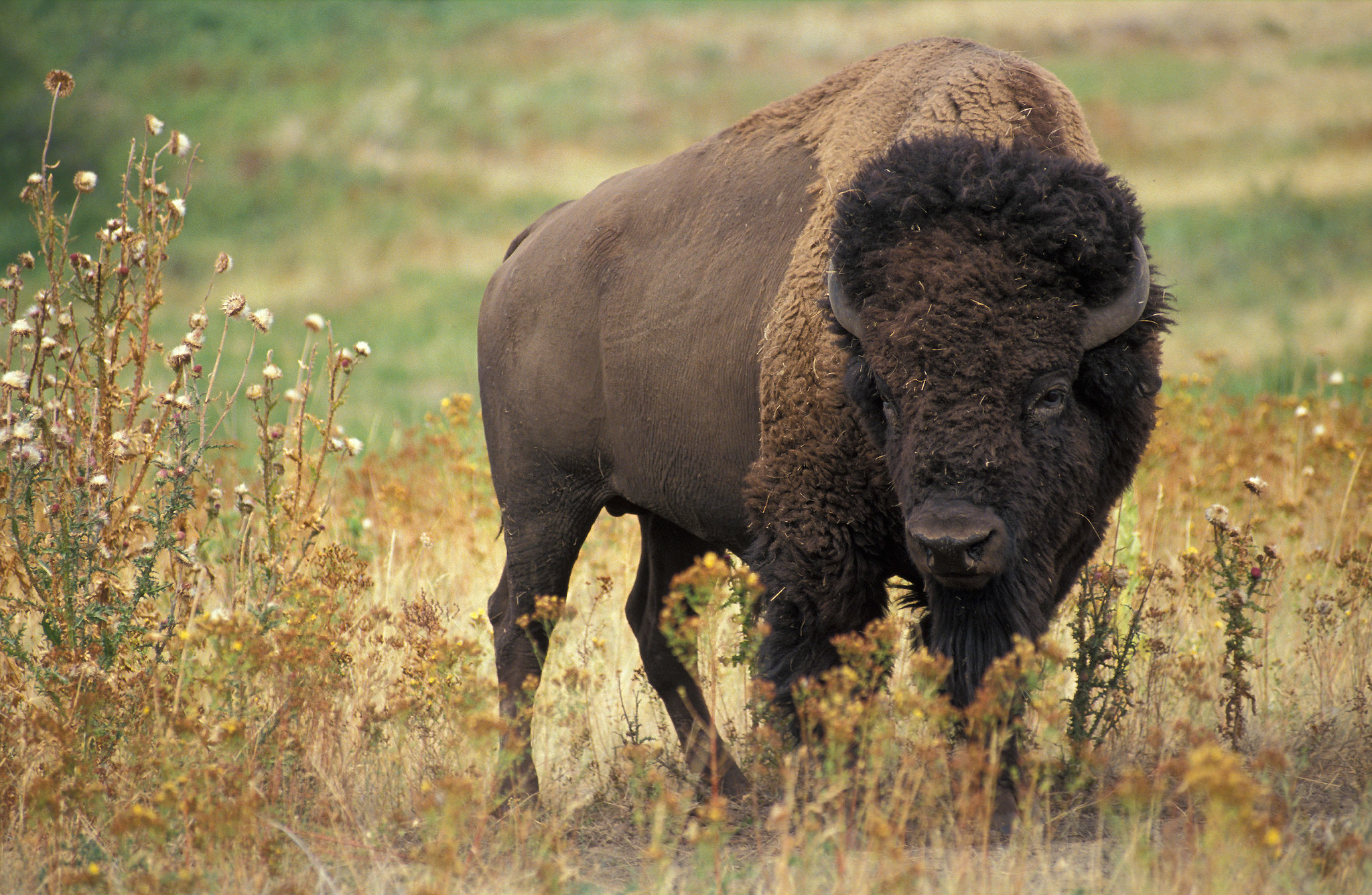
American bison are powerful, and majestic animals found in the plains, prairies, and river valleys of North America, though most are found only in national and state parks, reserves, and refuges today. Foraging for nine to eleven hours a day, they consume grass, flowering plants, lichen, and woody plant leaves.
In order to eat well during the winter, they sweep away the snow with their heads and hooves. However, in the spring, they also take to their open spaces to shed their stuffy winter coats. These bold creatures are iconic for their long, dark hair. In fact, adult bulls are known to rock a foot-long black beard!
10. Common Emu (Dromaius novaehollandiae)

If this quirky bird looks familiar, that’s because it’s a member of the ratite family, which includes ostriches. Native to Australia, they can also be spotted running around the grasslands of New Guinea, Indonesia, Solomon Islands, and the Philippines. Their preference for grasslands, savannas, and forests comes from their need for water sources, since they drink nearly two and a half gallons of water per day. There, these omnivores also forage for fruits, seeds, and small vertebrates.
Flightless but feisty, emus use their long mighty legs to kick predators away. Though they are not aggressive, unless provoked. If an emu suspects predators or threats to their nests nearby, they might make warning calls. They are easily recognizable for the sound they make: E-moo!
Aren’t you amazed by the wide range of wildlife species that rely on grasslands? Unfortunately, our grasslands are shrinking. But you can help by raising awareness about the North American Grasslands Conservation Act. For more information on how you can support some of the internationally acclaimed wildlife species, look into the ongoing campaign for an International Year of Rangelands and Pastoralists, which NWF has signed on to!




















